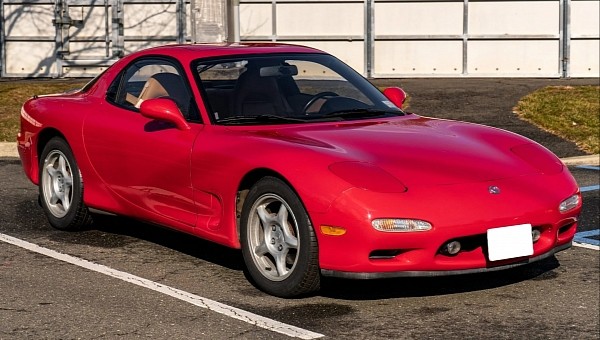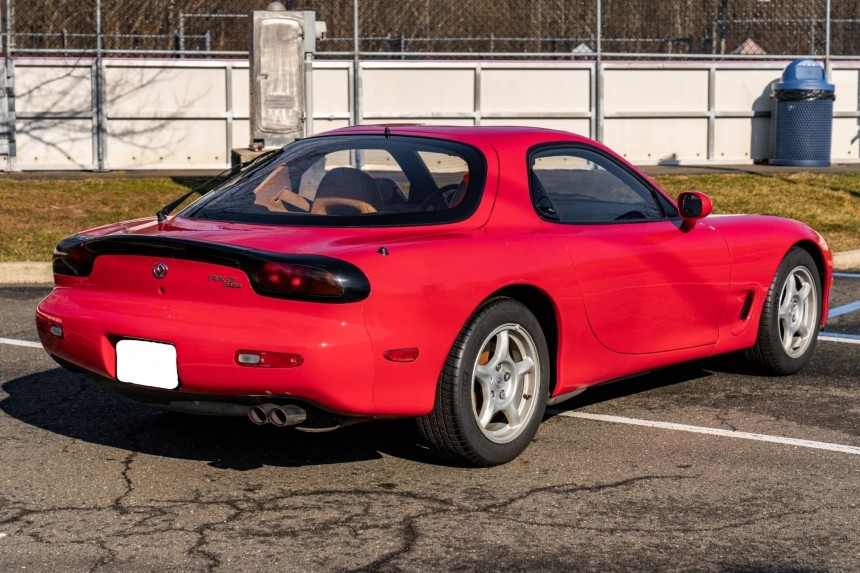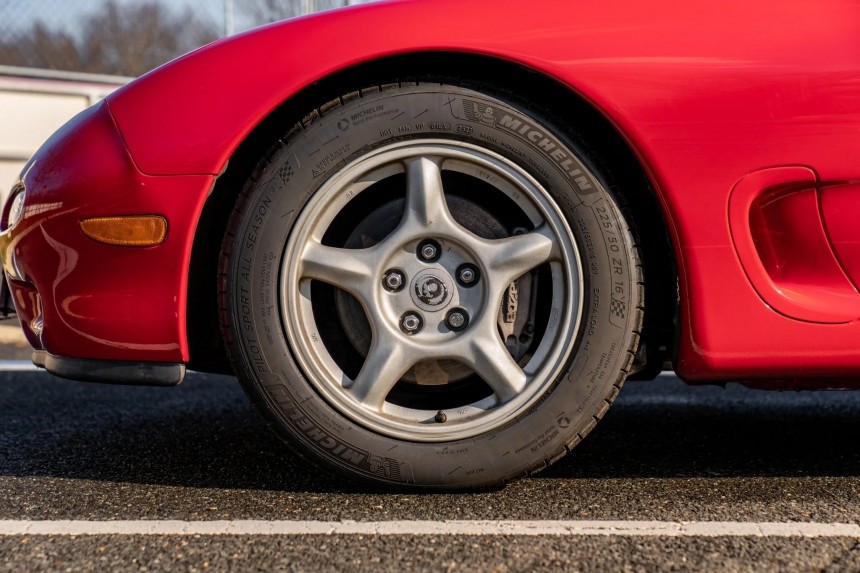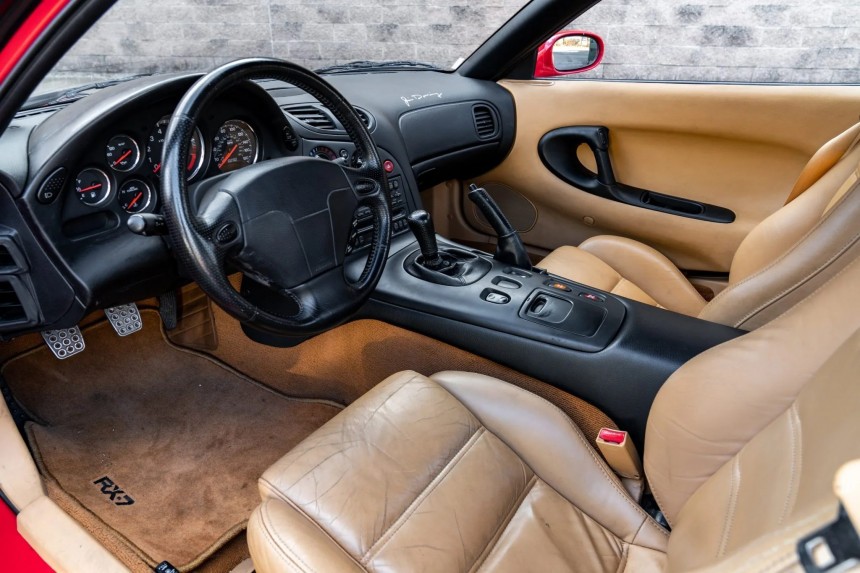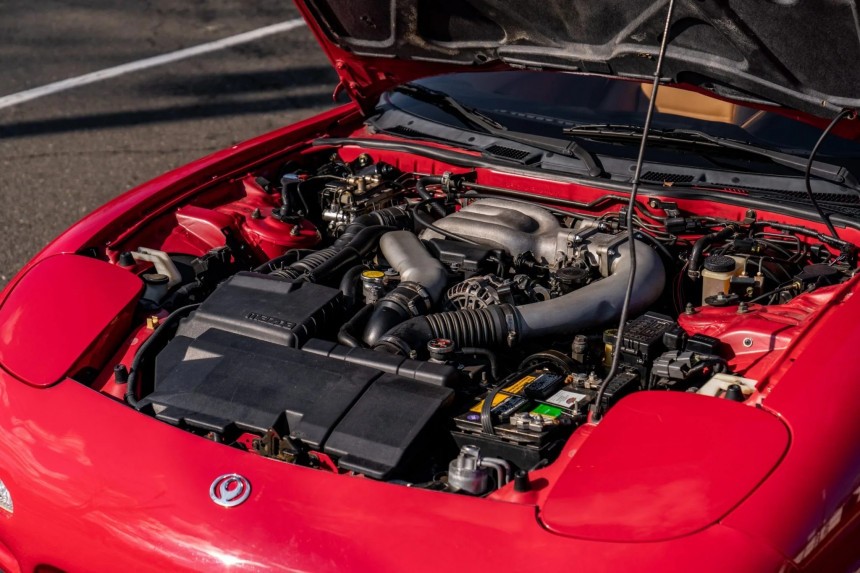One of the most important factors of a true driver's car is the noise it makes. Most engine notes can be described by a growl or a hum. But the engine in the Mazda RX-7 sounds like a nest of angry bees. So, what makes this sports car so desirable? Let’s dive.
To properly understand the Mazda RX-7, we must first take a look at its engine. It is the unconventional pistonless rotary engine. It was invented by a German teenager, called Felix Wankel, in the dark and evil times of the ‘30s and ‘40s. But we only care about the creation itself, not the radicalized inventor.
The idea of the Wankel engine was pretty bare-bones. He wanted one that completed the four stages of combustion as simply as possible while operating with as few moving parts as possible.
Development started in 1924. But it wouldn’t be for another two decades that the engine would finally be ready. After that, manufacturers from all over the world rushed to license the technology. But only one unlucky brand managed to take home the rights.
That crazy unlucky company was Mazda. I say "unlucky" because yes, it was revolutionary. But in essence, it featured an incredibly unreliable design. The unit was loud, hard to manufacture, and not that efficient. A lot of companies, big companies, like Mercedes, tried their hand with the Wankel rotary and failed, so why did Mazda think it could do better?
Well, it had a trick up its sleeve, in the form of Kenichi Yamamoto. He was in charge of the development of the rotary engine, and he amassed a team of devoted, pride-filled engineers to make the spinning Dorito reliable. A team called the 47 Ronin.
The biggest problem was the 'Devil’s nail marks.' It was a sort of chatter left on the inside of the chamber by the tips of the triangular piston. But, after sleepless nights, they found a solution – aluminum-carbon composite apex seals. In addition, they reworked the oil-fuel mixture, and the problems were gone. It was finally reliable, it stopped gulping oil as fast as gas and, with the addition of another rotor, it was powerful enough to go into production after two years.
The finished product was called the 10A, and it was shoved into the Mazda Cosmo. The Cosmo went on to put Mazda on the map. It wasn’t something ground-breaking, but for a small company, it did a lot. Following that, the rotary was put into almost everything Mazda had to offer.
The next big step for the rotary was in 1978. While the gas crisis was happening in full force, Mazda, once more, bet it all on the thirsty Wankel engine, and boy, oh boy, it paid off. That bet was the RX-7.
The first generation, the SA, and later, the FB, was the perfect home for the rotary - and it sold. The next generation was the FC, launched in 1985, and it brought a turbo to the table. But, in 1992, the world got the FD, rotary engine heaven.
The car we are talking about today is a 1993 FD RX-7. The FD arrived on the stage at a time when Japanese cars were getting stuffed with technology, all-wheel drive systems, and big six-cylinder engines hanging in the front - and Mazda didn’t like that. The goal for the FD was to be light, tossable, and fun.
The task was handed off to Tom Matano, the guy who was in charge of the Miata. This particular RX-7 is in stock form, which is quite rare nowadays, and that’s why we are talking about it. It perfectly represents the driving pleasure of a small, lightweight sports car.
On the outside, it is finished in Vintage Red, and it sits on 16-inch alloy wheels with new Michelin Pilot Sport All Season tires. The exterior is complemented by a sunroof, fog lights, and the head-turning pop-up headlights.
Stepping inside, you find sport seats wrapped in tan leather. Keeping the tan theme going is the center console and the door panels. Contrasting all that tan is a black dashboard with a black leather steering wheel. You also get cruise control, air conditioning, and power accessories as your creature comforts - as I said, the RX-7 was made with weight saving in mind, not a lot of tech.
Even though the car was light, it needed some more power to keep up with the competition. Thus, the 1.3-liter 13B unit received sequential twin-turbos, a world first on a production engine. For the example at hand, the turbos were replaced in 2021, but not with the classic tuner formula of a giant single turbo - no, this is stock. Power is rated at 255 spinning horses (258 ps).
Sending that power to the rear wheels is a five-speed manual transmission and a limited-slip differential. The car also sits on stock suspension, and braking is handled by the standard stopping power with disc brakes at all four corners and brake calipers at the front.
This RX–7 is up at auction in Closter, New Jersey. It has 40,000 miles (64,000 kilometers) and comes with a clean Carfax report and a clean New York title. One pretty cool thing about this RX-7 is its previous ownership. Up until 2022, it was owned by Mazda Motorsport IMSA driver, Jim Downing – and you also get his signature on the dashboard. The price currently sits at 33,500 dollars with two days left on the auction.
The Mazda RX-7 is an amazing creation, the prime example of what can be achieved when you are ready to make big bets and break the mold.
The idea of the Wankel engine was pretty bare-bones. He wanted one that completed the four stages of combustion as simply as possible while operating with as few moving parts as possible.
Development started in 1924. But it wouldn’t be for another two decades that the engine would finally be ready. After that, manufacturers from all over the world rushed to license the technology. But only one unlucky brand managed to take home the rights.
Well, it had a trick up its sleeve, in the form of Kenichi Yamamoto. He was in charge of the development of the rotary engine, and he amassed a team of devoted, pride-filled engineers to make the spinning Dorito reliable. A team called the 47 Ronin.
The biggest problem was the 'Devil’s nail marks.' It was a sort of chatter left on the inside of the chamber by the tips of the triangular piston. But, after sleepless nights, they found a solution – aluminum-carbon composite apex seals. In addition, they reworked the oil-fuel mixture, and the problems were gone. It was finally reliable, it stopped gulping oil as fast as gas and, with the addition of another rotor, it was powerful enough to go into production after two years.
The finished product was called the 10A, and it was shoved into the Mazda Cosmo. The Cosmo went on to put Mazda on the map. It wasn’t something ground-breaking, but for a small company, it did a lot. Following that, the rotary was put into almost everything Mazda had to offer.
The first generation, the SA, and later, the FB, was the perfect home for the rotary - and it sold. The next generation was the FC, launched in 1985, and it brought a turbo to the table. But, in 1992, the world got the FD, rotary engine heaven.
The car we are talking about today is a 1993 FD RX-7. The FD arrived on the stage at a time when Japanese cars were getting stuffed with technology, all-wheel drive systems, and big six-cylinder engines hanging in the front - and Mazda didn’t like that. The goal for the FD was to be light, tossable, and fun.
The task was handed off to Tom Matano, the guy who was in charge of the Miata. This particular RX-7 is in stock form, which is quite rare nowadays, and that’s why we are talking about it. It perfectly represents the driving pleasure of a small, lightweight sports car.
Stepping inside, you find sport seats wrapped in tan leather. Keeping the tan theme going is the center console and the door panels. Contrasting all that tan is a black dashboard with a black leather steering wheel. You also get cruise control, air conditioning, and power accessories as your creature comforts - as I said, the RX-7 was made with weight saving in mind, not a lot of tech.
Even though the car was light, it needed some more power to keep up with the competition. Thus, the 1.3-liter 13B unit received sequential twin-turbos, a world first on a production engine. For the example at hand, the turbos were replaced in 2021, but not with the classic tuner formula of a giant single turbo - no, this is stock. Power is rated at 255 spinning horses (258 ps).
This RX–7 is up at auction in Closter, New Jersey. It has 40,000 miles (64,000 kilometers) and comes with a clean Carfax report and a clean New York title. One pretty cool thing about this RX-7 is its previous ownership. Up until 2022, it was owned by Mazda Motorsport IMSA driver, Jim Downing – and you also get his signature on the dashboard. The price currently sits at 33,500 dollars with two days left on the auction.
The Mazda RX-7 is an amazing creation, the prime example of what can be achieved when you are ready to make big bets and break the mold.
